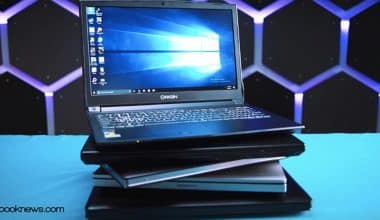There is no way to keep track of all of a company’s computers without some sort of automated computer inventory management software, yet modern businesses use more computers than ever before. This shows that there is always a necessity for computer inventory management software for easy maintenance of your computer hardware and software system. Read on to see the list of the best paid and free computer inventory management software you can opt for in this article. We also shed more light on how to manage your computer inventory management software. Why not dive in now?
Computer Inventory Management Software
In order to manage the storage, maintenance, tracking, and monitoring of computer hardware and software required by businesses for their operations, information technology (IT) administrators and managers utilize computer inventory management software.
What Does Computer Inventory Management Software Do?
In order to keep tabs on all of the computers and other electronic devices a company owns, it employs a procedure known as computer inventory management. The computers and other devices on a network can be analyzed by computer inventory management software, which then creates customizable reports detailing the precise hardware and software setup of each device.
There are numerous applications for computer inventory management software. Some computer inventory systems are made with home users in mind, making it easy to see the hardware and software installed on PCs running Windows, Mac OS X, and Linux. Other computer inventory solutions are geared toward IT administrators who are in charge of a full network of computers and other linked devices and can aid them in preparing for hardware and software purchases and identifying network faults.
Best Computer Inventory Management Software
Here is a list of paid and free computer inventory management software:
#1. SolarWinds Server & Application Monitor
The SolarWinds Server & Application Monitor is an automated inventory management system for monitoring servers and applications. SolarWinds Server & Application Monitor is a web-based graphical user interface (GUI) that can automatically discover IT assets and keep tabs on more than 1200 different types of vendors, apps, servers, and databases. Keeping track of all of your servers and the applications they run is a breeze with SolarWinds Server and Application Monitor. This application also monitors vital server statistics in real-time, including storage space, CPU use, memory usage, and network interface utilization.
The tool compares the amount of time a resource is really being used to its theoretical maximum. If a package resource starts getting low, an alarm will be sent. The tool monitors how different software components interact with one another, with services, and with the server’s hardware. The tool can easily pinpoint the source of performance issues with the application dependency map.
Recent configuration changes and any new or removed hardware can be tracked through the dashboard. You may now keep tabs on any shifts in the surrounding surroundings. upgrades to the infrastructure, administrators responsible for the upgrades, resource use, idle hardware, and more may all be found in the software inventory reports. Also, application infrastructure dependency mapping is built into the platform and provides a graphical representation of your environment’s application requirements and problems.
Features:
- Automatic IT asset discovery
- Dashboard
- Reports
- Application infrastructure dependency mapping
Businesses searching for a computer inventory management product with a broad range of monitoring capabilities should strongly consider SolarWinds Server & Application Monitor. It’s a Windows program. Costs begin at $1,813.
#2. Cherwell Asset Management
Ivanti’s Cherwell Asset Management is a hardware and software asset discovery solution that assists IT administrators in determining which IT assets are now deployed, to whom they are being deployed, and whether or not they are currently licensed. It does this by comparing the assets that were discovered with data from the purchasing process. Monthly pricing begins at $189.00. Also, it is one of the best computer inventory management software you can opt for.
Features:
- Reconcile current inventory of hardware and software with purchasing
- Pricing of Cherwell Asset Management is available upon inquiry
- Allows tracking of hardware and software lifecycles
- Pinpoint unknown or newly installed applications
- Helps you be aware of license risks
#3. Asset Panda
Asset Panda is an easy-to-use, customizable computer inventory management software solution. It allows for simple tracking and management of physical and digital assets. Asset Panda is a web- and mobile-based tool for managing your company’s hardware and software assets. Asset Panda’s support staff is located in the United States. It is also one of the free computer inventory management software but you start paying after 14 days.
Features:
- Barcode generation and scanning
- Tracking of compliance, service contracts, software licenses, repairs, and maintenance
- Provides a full lifecycle history for better reporting, visibility, and forecasting
- Submit IT tickets to speed up addressing issues
- Accessible online or through a mobile app
- Asset assignment to enforce accountability
#4. Network Inventory Advisor
Network Inventory Advisor is a comprehensive piece of computer inventory management software that can provide customizable hardware and software reports for any number of computers running Windows, macOS, Linux, or any other operating system. It does not require any kind of agent installation and is able to collect, aggregate, and manage software licenses for over 500 different developers.
The ability to administer numerous networks from a single installation of Network Inventory Advisor makes it ideal for managed service providers to keep all of their client’s networks in one place and switch between them with a single mouse click. Moving, grouping, regrouping and ungrouping, reassigning, and editing several nodes at once is a breeze with Network Inventory Advisor, as is narrowing down the network inventory with just a few clicks. Network Inventory Advisor is priced reasonably, with no hidden costs or constraints to worry about, and it can be used by businesses of any size. It is one of the free computer inventory management software you can opt for. However, the offer is a free 2-week trial on networks with up to 25 nodes, and the download is available from the official website.
#5. SafetyCulture (formerly iAuditor)
When it comes to managing a group’s computer stockpile, SafetyCulture is among the greatest computer inventory management software available. SafetyCulture, a mobile app that has won multiple awards, is compatible with iOS, Android, Mac, and PC, making it useful for IT managers across all stages of the software and hardware lifecycle.
Companies choose SafetyCulture because it helps them comply with industry standards and regulations with features like robust, configurable digital checklists and forms, timely maintenance inspections, real-time corrective actions, secure recordkeeping, and analytical analytics. It is a free computer inventory management software with a free 30-day trial period but you start paying $19/month after then.
Features:
- Global customer support 24/5
- Competitive pricing for a computer inventory management software
- Dedicated account manager (Premium and Enterprise)
- Customizable mobile maintenance checklists and other best practice templates available for free from the public library
- Administrative controls for inspections, actions, reports, and analytics
- Generate reports in web, PDF, and other file formats
- Real-time corrective actions assignments and status updates
- Scheduled reminders and automated notifications for maintenance and other tasks
- Secure data collection and insightful dashboard for analytics
- Connect to sensors for automation of IT asset monitoring
- Integrate with existing systems via API
#6. Atera
Atera is a web-based service that offers a suite of utilities for controlling and monitoring endpoint computers from afar. It was created with the intention of performing remote monitoring and administration of IT assets. The package has a multi-tenant edition for managed service providers that allows them to keep their customers’ data separate while yet monitoring numerous locations at once. Each MSP customer may have more than one location that needs keeping an eye on. Each network that is registered is scanned by the program, and an inventory of network hardware and software is created. This inventory is kept as both physical and digital files. License and patch management can’t be performed without first compiling a comprehensive software inventory. The included asset monitoring service routinely analyzes the health of your network’s nodes and devices for signs of resource depletion or malfunction.
It offers an optional service that automatically maps networks and maintains a record of all the nodes and connections between them as part of its computer inventory services. Atera’s console is accessible from any modern web browser, and it allows for the coordination of technicians working from different locations or even from their own homes. There are three packages available, each of which provides access to the system as well as capabilities for managing teams and businesses. It may connect with third-party tools through accessible integrations, giving you access to a wider range of monitoring options. It is a free computer inventory management software. However, the free trials of Atera are only available for evaluation.
Key Features:
- Optional network discovery and mapping service
- Automated patch management
- A multi-tenanted architecture to manage several client systems
- Alerts for performance problems
#7. UpKeep
Upkeep is an application that was developed to act as a centralized management hub for upkeep and dependability. The software was designed with mobile devices in mind, making it possible for businesses to streamline processes like inventory management, property management, facility maintenance, and asset management. The price starts at $45.00 per month.
Features:
- Create, manage, and update work requests for repairs and maintenance
- Schedule preventive maintenance work in the calendar view
- Create and use digital maintenance checklists for routine inspections and more
- Time and cost tracking
- Barcode generation and scanning
- Track operational downtime remotely
#8. Lansweeper
With its streamlined reporting options and automatic software deployment features, Lansweeper has quickly become a favorite agent-less inventory management and software auditing solution. With Lansweeper, you can receive, evaluate, and close off support tickets without switching between different applications. It is also a free computer inventory management software. However, the functionality offered in any of the three premium editions of Lansweeper is significantly reduced in the free version, which is restricted to just 100 assets.
#9. Desktop Central Management
Desktop Central offers an IT inventory management solution that helps customers keep track of their hardware and software inventories, as well as their network inventories, with “out-of-the-box” network inventory reports.
Features:
- Establish network security through automatic uninstall of prohibited applications
- Automate notifications for hardware and software-related tasks
- Gather inventory data through systems scanning
- Manage license compliance
- Produce customized reports
#10. Spiceworks IT Asset Management
With Spiceworks IT Asset Management, you can keep track of all of your company’s hardware, from desktop PCs and servers to routers and switches. When it comes to managing software licensing, especially for cloud services, Spiceworks has you covered. Also, Spiceworks is designed for larger organizations and may be too complex for a smaller company to use effectively.
#11. Ivanti Software Management
Ivanti promotes itself as an all-in-one solution by providing features for both hardware and software management as well as a service desk.
Features:
- Visibility of IT assets including hardware, software, server, cloud, etc.
- Manage IT spending, track asset age, and current value
- Manage vendor information
- Manage IT assets using a mobile app
- Barcode scanning capable
#12. WinAudit
WinAudit is a straightforward Windows computer inventory management software. It’s open source, so anyone can use it and distribute it. WinAudit’s primary function is to provide a detailed report on a computer’s setup, which may then be exported as CSV, RTF, or HTML. WinAudit is suitable for home users and small enterprises that don’t require all of the bells and whistles of more sophisticated auditing and network management software like Network Inventory Advisor.
#13. EZOfficeInventory
EZOfficeInventory is an online and mobile app-based piece of cloud-based software. Their product streamlines administrative processes. Giving businesses the freedom to manage reports and audits on the road, as well as keep tabs on assets located in many locations. The monthly plans begin at $45.00.
Features:
- Barcode and QR code generation and scanning
- GPS tracking
- Digital audits for regular monitoring
- Service tickets and triage
- Maintenance scheduling and alerts
- API integration with REST-based systems
- End-to-end asset lifecycle management
#14. AssetExplorer
To aid in the management and monitoring of IT assets, system administrators and IT professionals can use AssetExplorer by ManageEngine, a web-based IT asset management software. The features of this software include network asset discovery, software and hardware asset management, software licensing compliance, and contract and purchase order tracking. Also, the software is straightforward to set up and is compatible with Windows, Linux, and macOS resources on your network.
Features:
- Asset life-cycle from procurement to disposal
- Generate detailed reports and schedule delivery to inbox
- Track hardware and software assets using AssetExplorer mobile app for IOS and Android
- Network range scans
- Software license management
How to Manage Computer Inventory Management Software?
Have you been thinking of how to manage a computer inventory management software? Worry not! Here are some ways to manage a computer inventory management software:
#1. Get the Tool That Works Best for you
The right computer inventory management software may make the lives of IT administrators much easier, regardless of whether the company is small, medium, or enterprise size. IT management can better guarantee effective computer inventory management with the help of a mobile platform that features secure recordkeeping, is cloud-based and paperless, automatically notifies users of upcoming maintenance and other tasks, integrates with other software, and can be used by the entire IT team.
#2. Build a Responsible Team
When it comes to managing your company’s computer inventory, it’s not enough to simply pick the hardware and software that will work best for your company; you also need to find and prepare employees who can be trusted with critical information technology duties. IT workers can assist IT administrators in taking on responsibilities that contribute to good computer inventory management if they are deployed after receiving appropriate training using efficient training tools. Also, it would be good to use IT help desk software to organize and prioritize tasks.
#3. Use Digital Checklists and Inventory Forms
Paper forms were formerly sufficient for various sorts of inventory management, but those days are long gone. It’s important to think about whether or not you’re using trustworthy solutions when you need to store and access data quickly and easily at any time. With the use of an app, you can access different industry-specific digital checklists and forms for use in computer procurement, upkeep, and implementation. What’s even better is that you can utilize any of them without paying a dime.
Why Should I Use Computer Inventory Management Software?
There are several situations in which it would be helpful to maintain a detailed inventory of your computer inventory management software, including the number, kind, and location of each machine. Companies all over the world lose a lot of money every year on unused gear and software that they could have prevented with proper planning and data from computer inventory management software. Even while this is more common in large enterprises, it is nonetheless a problem for startups and smaller businesses. The problem is even more severe now than it was previously since BYOD policies make it more difficult for management to budget for new technology.
In order to ensure compliance with software license agreements and to be ready for a software license audit, tracking software licenses is a capability offered by many computer inventory management software packages. Having a software solution that can automatically send alerts when it identifies a compliance issue can save a business a lot of time and money, especially given the complexity of the current software license environment with its myriad of various software licensing models.
What Are the Challenges of Computer Inventory Management Software?
The following are the challenges of computer inventory management software:
#1. Asset Tracking
The management of computer inventory entails being aware of the precise physical or virtual location and status of every piece of computer hardware or software. When a company expands, the complexity of its operations increases, necessitating more sophisticated gear and software. IT administrators are responsible for keeping track of all of their company’s computers, a task made easier with the correct tools.
#2. Recordkeeping
Keeping records can be easy or difficult, depending on the size and nature of the business, and may involve recording details such as the computers’ names, models, serial numbers, batch numbers, units, inactive computers, and assigned users. When a company has ambitious growth plans or runs a complicated operation that demands the speed and efficiency that digital recordkeeping alone can deliver, paper-based recordkeeping can become a major burden.
#3. Maintenance
IT managers must keep track of where all of the computers and their components are, as well as their current hardware and software status, to guarantee that they are always operating at peak efficiency. Hardware must be of sufficient quality to meet operational requirements, and software must be backward-compatible with that hardware and, ideally, the most recent version. IT managers may better anticipate maintenance needs with the aid of a platform that allows for accurate record-keeping and tracking, as well as the automation of reminders and notifications for activities.
What Is the Difference between Hardware Inventory and Software Inventory?
A hardware inventory is a comprehensive catalog of all the machines that make up a given system or network. In most cases, the hardware inventory will also include the operating system version. Each computer’s operating system is included in the software inventory along with every other piece of software it has. Because it provides a tally of how many copies of each program are currently in use, a software inventory is helpful for license management. It is also compatible with patch management systems as well.
How Do I Keep Track of My Computer Inventory Management Software?
The following are ways to keep track of your computer inventory management software:
- Know What You Have.
- Tag Your IT Hardware.
- Add Plenty Of Information.
- Assign Hardware To Colleagues.
- Track ALL Maintenance.
- Use History As An Indicator Of Hardware Performance.
- Use The Best IT Hardware Inventory Management Software.
What Can I Use to Keep Track of an Inventory?
- Manual Tracking.
- Card System.
- Spreadsheets.
- Accounting Systems.
- Inventory Management Systems.
- Open Source Software.
- Software-as-a-Service (SaaS).
- Cloud-Based Software.
Final Thoughts
To ensure you get the computer inventory management software that best fits your needs and your surroundings, we suggest checking out several different options before making a purchase.
Related Articles
- BEST APPS FOR INVENTORY MANAGEMENT IN 2023
- IT ASSET MANAGEMENT: Meaning, example, systems & software
- Best 15+ INVENTORY SYSTEMS FOR SMALL BUSINESS in 2023 (+ Free Options)
- Best 15+ INVENTORY SYSTEMS FOR SMALL BUSINESS in 2023 (+ Free Options)
- TOP BEST IDENTITY MANAGEMENT SOFTWARE 2023
- INVENTORY CONTROL MANAGEMENT & SYSTEM: Best Practices
- METAVERSE COMPANIES: Top Metaverse Companies to Know






